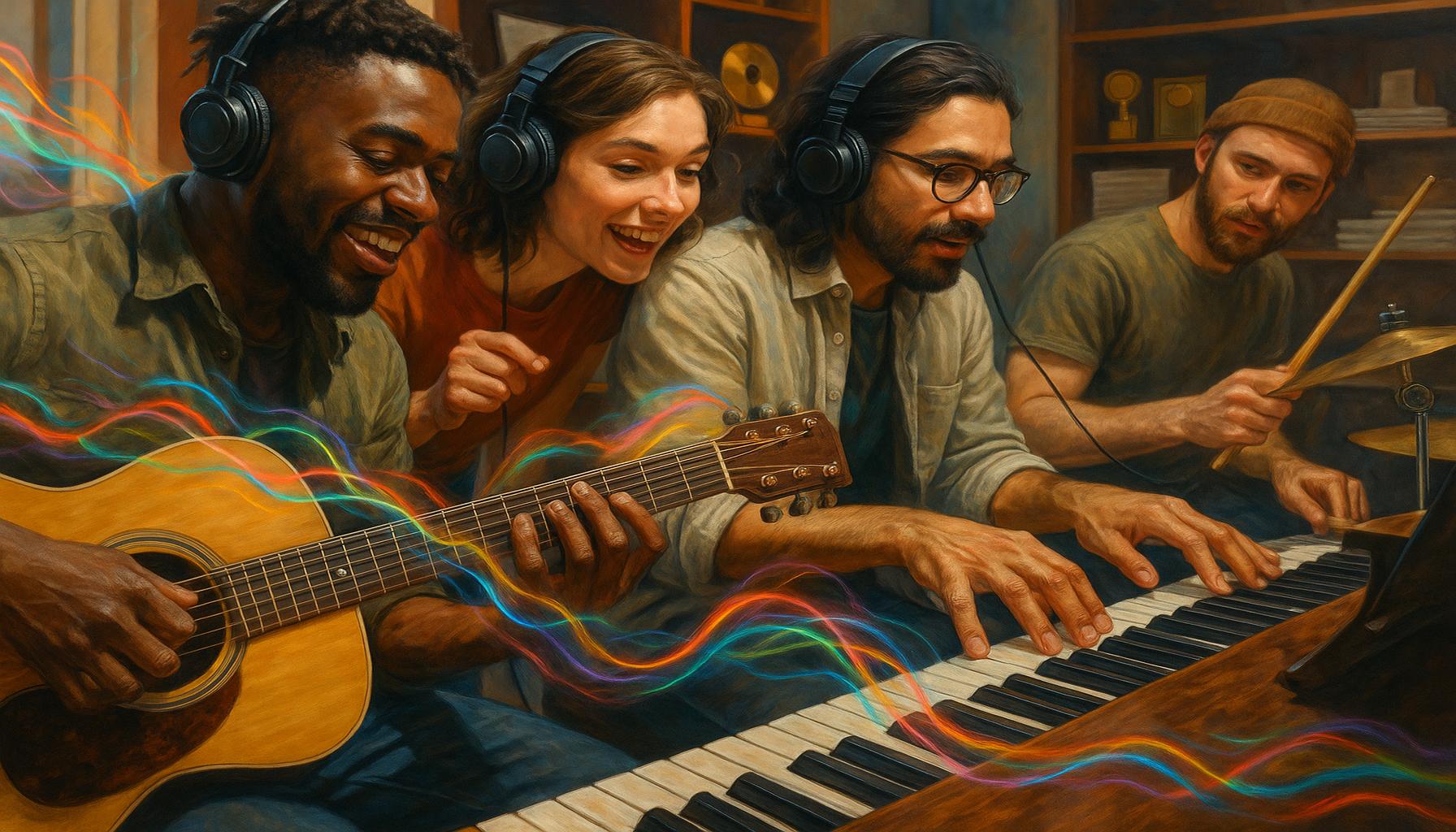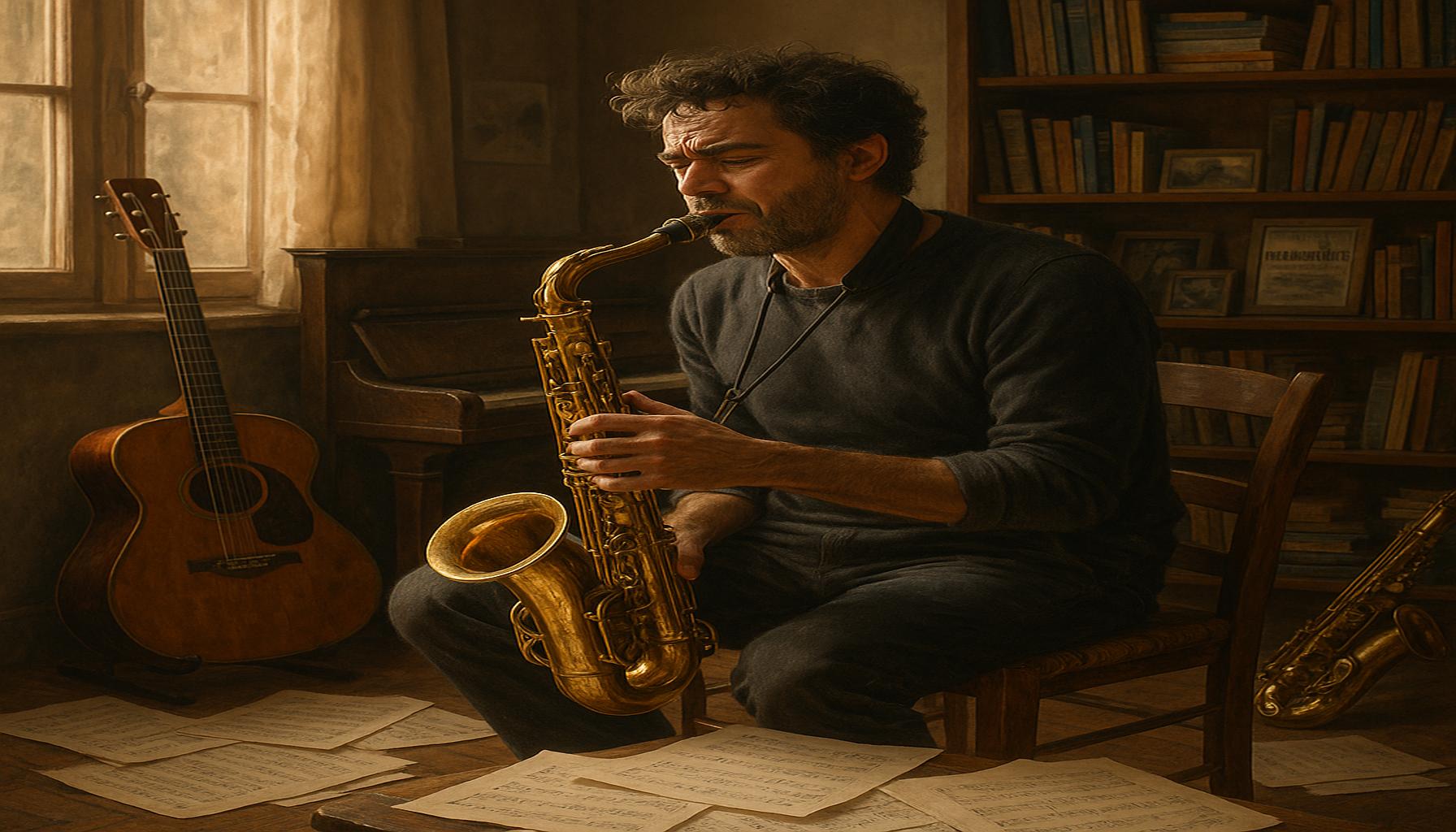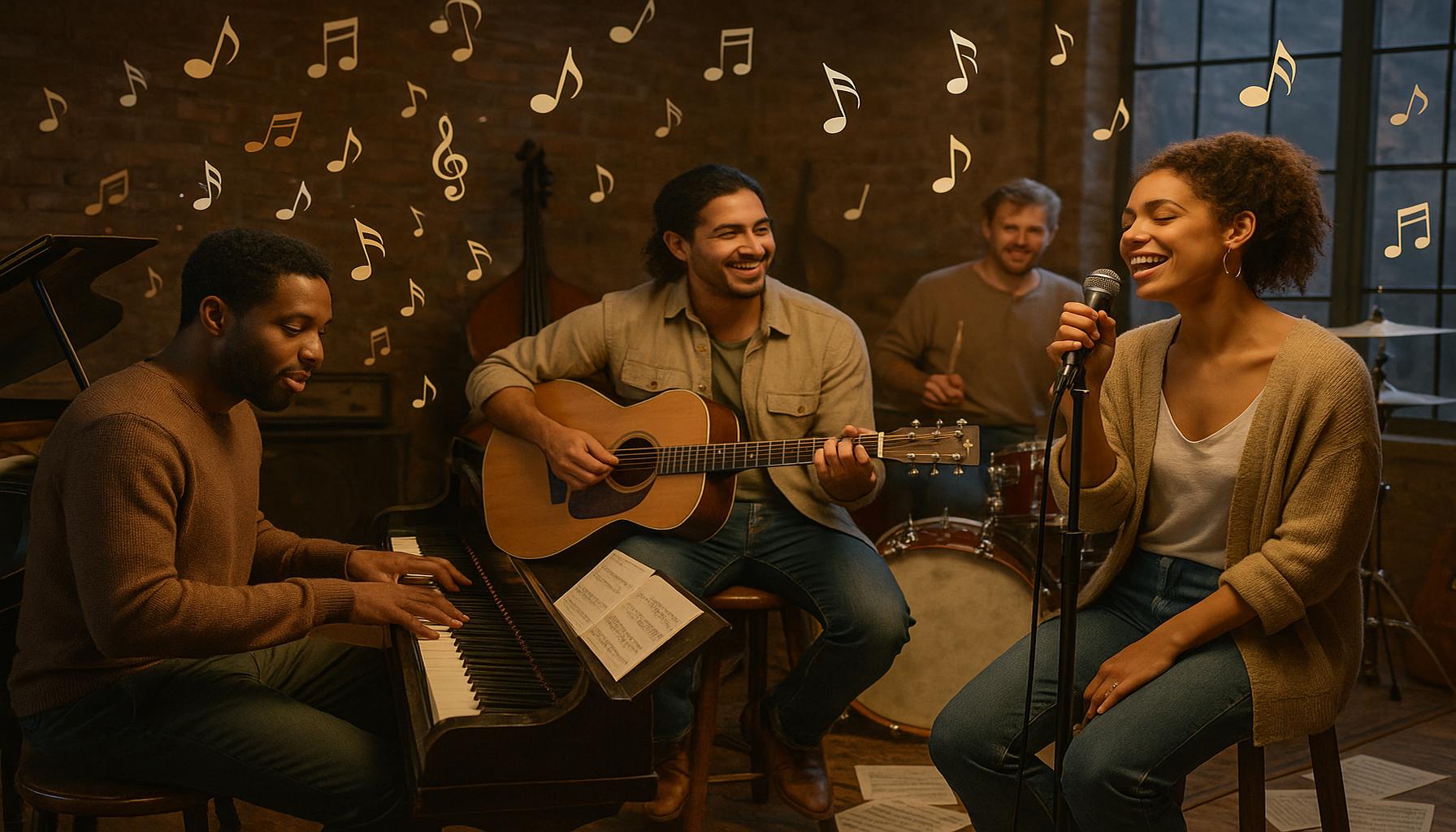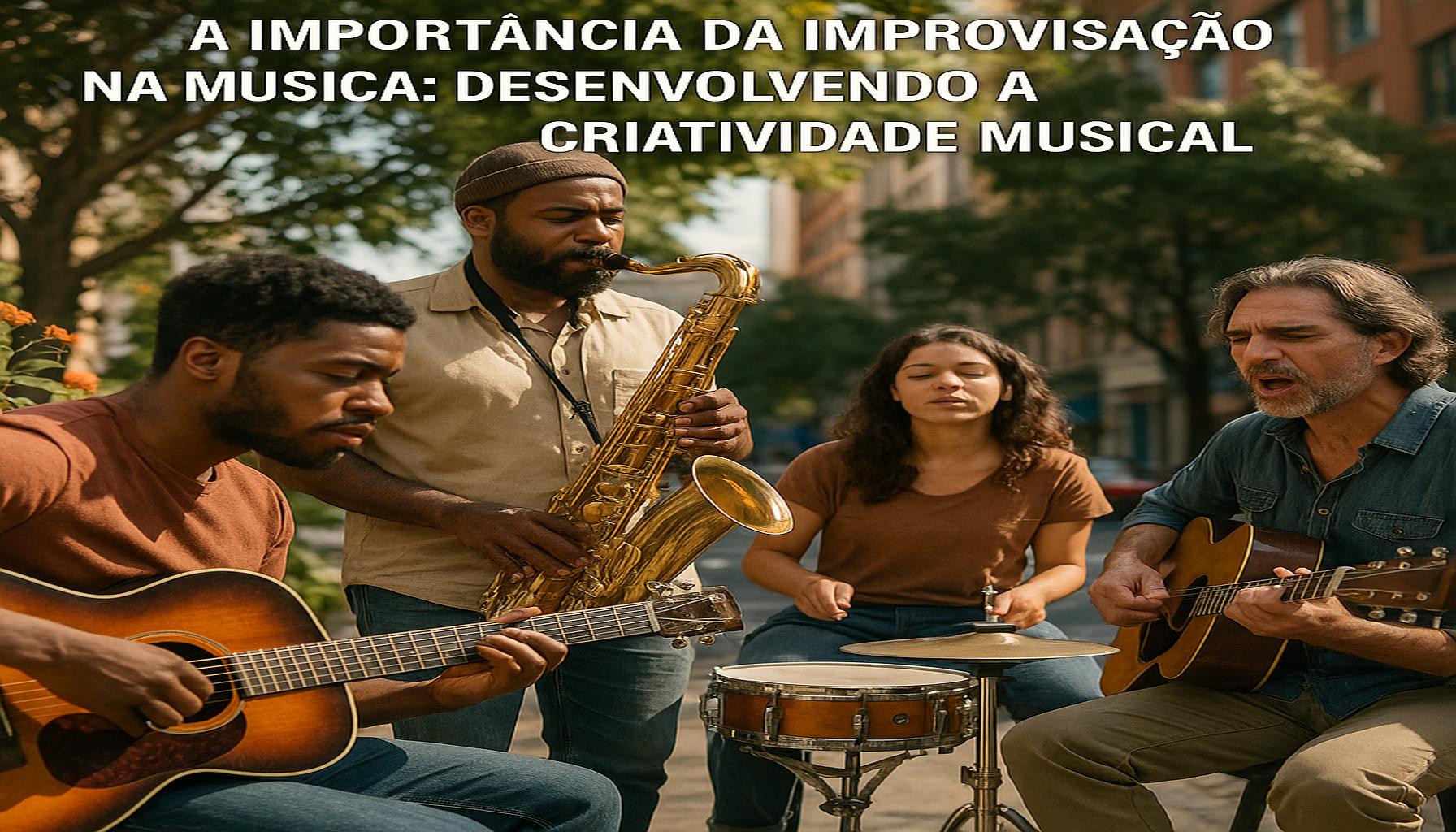The role of collaboration among musicians in skill development and artistic expression

The Transformative Impact of Musical Collaboration
In the world of music, collaboration stands as a cornerstone of innovation and growth. When musicians choose to work together, they embark on a shared journey that expands their horizons and deepens their understanding of the craft. Whether it’s a seasoned artist partnering with an emerging talent or a group of musicians from different genres coming together, the potential for growth and creativity is vast.
One of the primary advantages of collaboration is skill sharing. For instance, a guitarist skilled in jazz techniques may collaborate with a hip-hop artist, leading to a unique fusion that incorporates intricate chord progressions into a rap song. This type of interaction not only facilitates the exchange of techniques and styles but also encourages musicians to step out of their comfort zones. By engaging with various genres, artists enhance their own repertoires and discover new ways to express their musical ideas.
Another significant benefit is creative synergy. When diverse artistic visions come together, they often result in unexpected and groundbreaking outcomes. Take, for example, the collaboration between country star Kacey Musgraves and pop icon Sam Smith. Their co-created track brought together elements of both country and pop, captivating a broad audience and achieving commercial success. This illustrates how merging different musical influences can yield innovative compositions that resonate on multiple levels with listeners.
Furthermore, collaboration leads to network expansion. When artists work together, they not only gain exposure to each other’s fan bases but also connect with industry professionals who might have been out of reach independently. For instance, indie artists collaborating on a project might attract the attention of a record label interested in promoting fresh, collaborative sounds. This cross-pollination of networks allows musicians to build relationships that are vital for career advancement.
Collaboration can manifest in various forms, including:

- Co-writing songs, where artists pool their ideas to create captivating lyrics and melodies.
- Joining forces for live performances, enhancing both the performance experience and audience engagement.
- Participating in workshops and masterclasses, where musicians can share knowledge and hone their skills.
Throughout the musical landscape of the United States, collaboration is evident in multi-artist festivals, community jam sessions, and collaborative albums that bring different styles and cultures together. Ultimately, as musicians continue to explore and redefine their artistic expressions through collaboration, they pave the way for a richer and more diverse musical culture that inspires and engages audiences across the nation. This dynamic process not only fuels their personal growth and creativity but also enriches the broader musical narrative, demonstrating the profound impact of shared artistic endeavors.
DIVE DEEPER: Click here to uncover the emotional and mental benefits of photography therapy
Unlocking New Horizons: Collaboration’s Role in Artistic Growth
The art of music is not only an individual pursuit but also a profoundly communal experience. When talented musicians collaborate, they create a fertile ground for skill development and artistic expression. This union allows artists to leverage each other’s strengths and learn from different perspectives, which can often lead to stunning musical outcomes. By embracing collaboration, musicians unlock previously unseen potential in their craft.
One of the core elements of collaboration is the concept of cross-pollination of skills. Artists from varied backgrounds bring unique techniques and practices that can enrich each other’s work. For instance, a violinist raised in classical traditions may collaborate with a folk guitarist, resulting in a new sound that blends technical precision with raw, lyrical storytelling. Such fusion not only broadens the repertoire of both artists but also enhances their overall skill sets. They learn to adapt to different styles and techniques, which can improve their proficiency and versatility as musicians.
Collaboration can also facilitate an environment of collective creativity. In a group setting, ideas can flow freely, allowing for spontaneous bursts of inspiration. The interactive nature of working with others encourages musicians to think outside the box. For example, the well-known collaboration between the band *The Traveling Wilburys*, consisting of legends like Bob Dylan, Tom Petty, and George Harrison, resulted in compositions that were not just the sum of their parts but rather extraordinary new musical phenomena. Each member contributed their individual artistry, creating songs that showcased an amalgamation of their influences and styles.
A pivotal aspect of this collaborative process is the opportunity for musical mentorship. Seasoned musicians can provide invaluable guidance and insights to less-experienced artists. This kind of mentorship fosters a spirit of learning, where emerging talents gain knowledge and expertise that can shape their careers. An excellent example of this dynamic is seen in the relationship between artists involved in the American Songwriter’s Workshop, where veterans share the stage and their wisdom with up-and-coming songwriters, helping them refine their skills and craft compelling narratives through music.
Moreover, through collaboration, musicians can engage in cultural exchange, broadening their artistic perspectives. Drawing from different cultural backgrounds not only enhances the authenticity of their music but also paves the way for innovative sounds that reflect the rich tapestry of American music. For instance, collaborations between country artists and Latin musicians have birthed incredible hybrid genres that resonate with diverse audiences and celebrate multicultural influences.
In summary, the impact of collaboration in the music industry cannot be overstated. It serves as a catalyst for skill enhancement, creative exploration, and cultural enrichment. As artists continue to collaborate across genres and demographics, they not only push the boundaries of their creativity but also embrace a collective journey that ultimately leads to greater artistic expression and a vibrant music landscape.
The Dynamics of Musical Collaboration
Collaboration among musicians transcends mere teamwork; it is a dynamic interplay that enriches artistic expression and enhances skill development. When musicians come together, they can share **diverse perspectives**, which can lead to innovative soundscapes and arrangements. This fusion of ideas often results in more nuanced compositions, showcasing a range of influences and styles that may not have emerged in solitary practice. An important aspect of this collaboration is the **mentorship opportunities** that arise. Experienced musicians can guide novices, offering insights into techniques, styles, and performance practices. This mentorship not only aids in honing technical skills but also boosts emotional intelligence and adaptability, essential traits for any performing artist. Moreover, collaboration cultivates a sense of community and encourages the exchange of constructive feedback. Such an environment enhances creativity, as musicians feel supported in taking artistic risks. Engaging with fellow artists can lead to **improved self-confidence**, enabling performers to explore new genres or instruments they may have otherwise shied away from. This collaborative approach helps artists to develop a more profound understanding of their craft and encourages ongoing learning, ensuring they stay relevant in a rapidly changing musical landscape.
Benefits of Collaborative Projects
The benefits of collaborative projects are multifaceted. When musicians engage in partnerships, they often experience enhanced **motivation and inspiration**. The shared passion for creating music fosters a stimulating environment where ideas flow freely. The sense of camaraderie that develops can also reduce performance anxiety, allowing musicians to express their artistry with more freedom.Additionally, collaborations may open doors to new professional opportunities, ranging from joint performances to co-writing sessions. Building networks through collaboration not only expands an artist’s reach but also exposes them to diverse audiences. This exposure can be vital for career growth, especially in today’s competitive music industry.Musical collaborations also provide opportunities for **cultural exchange**, allowing artists from different backgrounds to blend their traditions and create something unique. This cross-pollination of cultures adds richness to the art form and can lead to groundbreaking musical innovations.Furthermore, participating in collaborative projects can lead to the development of new skills. For instance, musicians may learn to play different instruments or adapt to various genres, enhancing their versatility. It is within this collaborative framework that musicians not only technical prowess but also their artistic voice, resonating deeply with audiences as they share their collective experiences and stories.
| Advantage | Description |
|---|---|
| Diverse Perspectives | Collaborators bring unique influences that lead to richer compositions. |
| Mentorship Opportunities | Experienced artists guide novices, enhancing skills and confidence. |
| Motivation and Inspiration | The collaborative environment fosters creativity and reduces anxiety. |
| Cultural Exchange | Fusion of different traditions leads to innovative musical expressions. |
Musicians engaging in collaborative efforts ultimately contribute to an ever-evolving artistic landscape, making the art of music more enriching and inclusive.
DIVE DEEPER: Click here to learn more
Harmonizing Ideas: The Synergy in Collaborative Music-making
The beauty of collaboration among musicians goes beyond mere technique and reach into the realm of emotional connectivity. When artists create together, they often share emotional narratives that resonate not only with each other but also with their audience. This deeper level of connection fosters a sense of community and allows musicians to draw from personal experiences, infusing their work with authenticity. As they co-create, they bring their unique stories into the mix, presenting a multifaceted view of emotions that enriches artistic expression.
Furthermore, collaboration can lead to innovative problem-solving. Musicians often encounter challenges in their artistic processes, whether it be writer’s block, technical hurdles, or the quest for a novel sound. When faced with obstacles, the presence of a collaborative partner can provide fresh perspectives and solutions. For instance, producers like Pharrell Williams are known for their ability to incorporate the ideas of various artists, resulting in music that feels both modern and timeless. His collaborations with musicians across a multitude of genres—ranging from pop to hip-hop—highlight how partnership can lead to groundbreaking projects.
Additionally, the power of collaboration can be greatly amplified through the use of technology. With the advent of digital tools and online platforms, musicians from afar can unite their creative forces, transcending geographical limitations. Platforms like SoundCloud and Bandcamp have cultivated communities where independent musicians showcase collaborative works in real time. Projects such as “The Collaborative Project” invite artists from all over to contribute their parts, creating an inclusive musical tapestry. This connectivity not only allows for diverse skill sets to merge but also encourages a more democratized form of artistic expression where ideas can flourish, regardless of an artist’s status.
Moreover, collaborations often result in the creation of ephemeral art. Musical performances, especially in live settings, take on their own unique character in the spirit of collaboration. When artists perform together, their chemistry can lead to spontaneous improvisation that captivates audiences. For example, jazz legends like Miles Davis and John Coltrane continually pushed artistic boundaries through their combined talents, producing electrifying performances that were never replicated. Such collaborations become more than just songs; they turn into experiences that live on in the memories of those fortunate enough to witness the magic.
A major factor in strengthening collaborative ties among musicians is the growth of social networks. Today, social media platforms allow artists to connect, share ideas, and recruit other musicians for collaborative endeavors. Sessions can begin with a simple tweet or post, expanding an artist’s reach and introducing them to like-minded creatives across the globe. An example of this success is seen in the growing number of “collab albums” wherein multiple artists contribute to a single project, reflecting a movement towards shared artistic ownership and community building that profoundly impacts the music industry.
Ultimately, as musicians continue to engage in collaborations, they not only foster their skills and artistic growth but also challenge the very definition of what music can be. The convergence of backgrounds, emotions, and ideas in collaborative efforts enriches the artistic landscape and exemplifies the transformative power of working together in harmony.
DIVE DEEPER: Click here to discover the evolution of digital photography
Connecting Through Collaboration: A New Era for Musicians
In conclusion, the importance of collaboration among musicians cannot be overstated as it plays a pivotal role in both skill development and artistic expression. By engaging in cooperative creative processes, artists not only refine their technical abilities but also expand their emotional and narrative depth. The stories woven through collaborative efforts create a richer and more diverse musical landscape that resonates with a wider audience, ultimately fostering a sense of community and shared experience.
Moreover, the challenges faced during the creative journey often find resolution through collaboration, as fresh perspectives can spark innovative solutions that drive artistic breakthroughs. Platforms available today have further democratized this process, allowing musicians from different backgrounds and locations to work together, breaking down barriers and reimagining what music can be. The rise of social media and digital networking has transformed how artists connect, empowering them to share ideas and collaborate on a grand scale.
Artists like Tame Impala and Anderson .Paak exemplify the power of collaboration, demonstrating how different influences can intertwine to create compelling music that transcends traditional genre boundaries. As the music industry continues to evolve, the collaborative spirit will likely remain at the heart of remarkable artistic expression.
The collaboration among musicians is more than merely a mechanism for skill enhancement; it represents a flourishing ecosystem of creativity that encourages innovation, inclusivity, and emotional resonance. As both emergent and established artists harness the power of partnership, they will undoubtedly redefine the future of music, inspiring future generations to create, collaborate, and connect.



